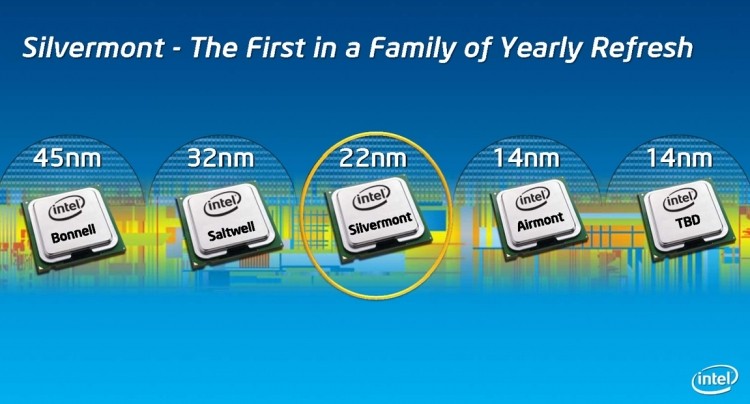Intel on Monday released details about their upcoming Atom processor redesign, code-named Silvermont. The 22-nanometer SoC, said to deliver three times the performance while consuming five times less power versus current Atom chips, will be the first in a family of yearly refreshes designed to make Atom processors more competitive with the rest of the market.
Intel's Belli Kuttanna noted in a recent press briefing that Silvermont isn't just a tweak of the previous design. Instead, it's a fundamentally new design that includes many features found in Intel's Core line of desktop processors like 3D Tri-gate transistor technology. What's more, we are told that Silvermont chips will be available with up to eight processing cores - a number that has eluded smartphone and tablet consumers in the US thus far.

One of the key design elements that gives Silvermont an advantage over current Atom processors is the out-of-order execution pipeline. As PCWorld explains, chips based on Bonnell and Saltwell must wait for input data to perform a program instruction. Silvermont chips, however, can skip ahead to parts of the next instructions that can be executed immediately. This means that the chip should never sit idle without a workload.

Other noteworthy features include support for 256-bit AES encryption and decryption, an improved random number generator that's more resistant to attack, additional virtual machine functions that security software can call on, seven new instructions used to process large data sets and 47 other instructions that cover things like memory access and media acceleration.

Intel has a solid shot at becoming a major player in the mobile sector here with Silvermont if they are able to deliver everything they claim.